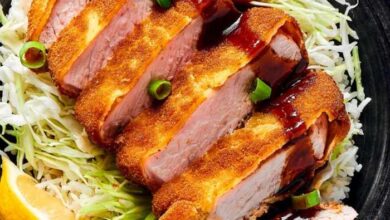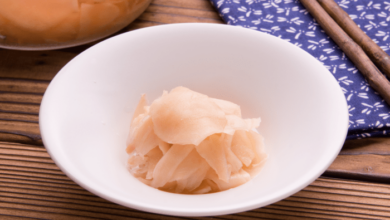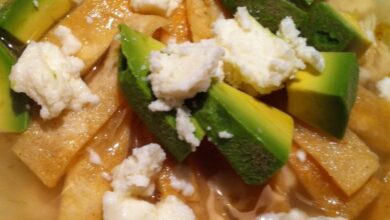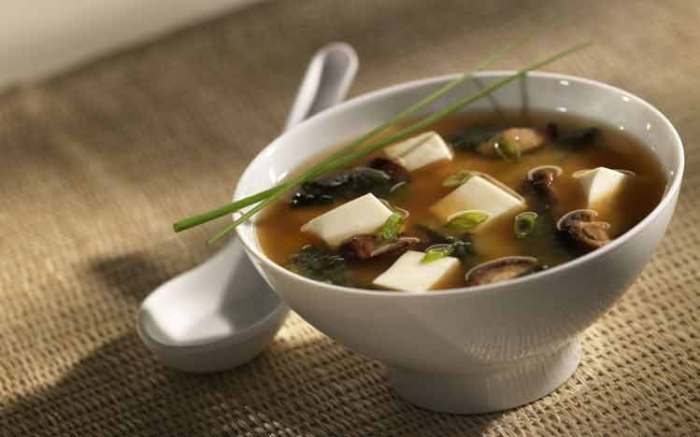
Miso Soup with Shiitake Mushrooms: A Flavorful and Healthy Dish
Miso soup with shiitake mushrooms is a classic Japanese dish that’s both flavorful and nutritious. This comforting soup is a staple in many Japanese homes and restaurants, and for good reason. The combination of savory miso paste, umami-rich shiitake mushrooms, and a light broth creates a symphony of flavors that’s sure to satisfy.
Beyond its deliciousness, miso soup with shiitake mushrooms offers a wealth of health benefits. Miso paste is packed with probiotics, which are beneficial bacteria that support gut health. Shiitake mushrooms are a good source of vitamins, minerals, and antioxidants. Together, these ingredients make for a soup that’s not only delicious but also good for you.
History and Origins
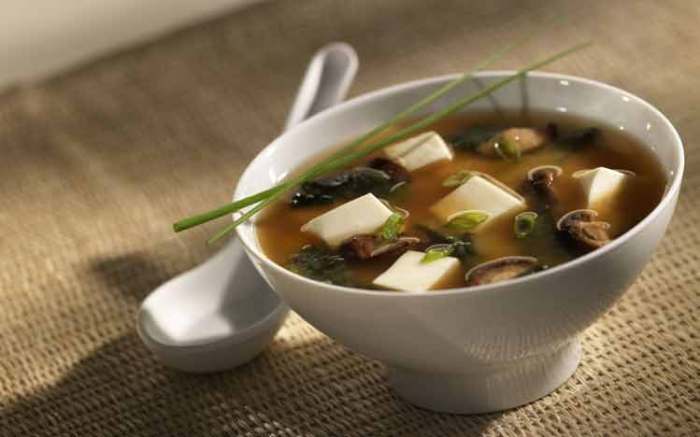
Miso soup, a staple in Japanese cuisine, has a rich history intertwined with the culture and traditions of the country. Its origins can be traced back to ancient times, and its evolution reflects the ingenuity and culinary prowess of the Japanese people.
The combination of miso, a fermented soybean paste, with dashi, a flavorful broth, and various ingredients like shiitake mushrooms, has created a dish that is both comforting and nutritious.
The Origins of Miso Soup
Miso, the foundation of miso soup, has a history that spans centuries. It is believed to have originated in China, where soybeans were fermented to preserve them. The practice of miso fermentation was introduced to Japan around the 7th century, where it quickly became an integral part of Japanese culinary traditions.
The use of fermented foods in Japan is deeply rooted in the country’s history and climate. Fermentation not only preserves food but also enhances its flavor and nutritional value. Miso, with its umami richness and probiotic benefits, became a prized ingredient in Japanese cooking.
Shiitake Mushrooms in Japanese Cuisine
Shiitake mushrooms, known for their earthy flavor and distinct aroma, have been a valued ingredient in Japanese cuisine for centuries. Their cultivation can be traced back to ancient times, and they have long been considered a symbol of health and longevity.
Shiitake mushrooms are highly prized for their culinary versatility. They can be added to soups, stews, stir-fries, and grilled dishes, adding depth and complexity to the flavor profile. In traditional Japanese medicine, shiitake mushrooms have been used for their medicinal properties, believed to boost the immune system and promote overall well-being.
The Popularity of Miso Soup with Shiitake Mushrooms
The combination of miso soup and shiitake mushrooms is a harmonious union of flavors and textures. The umami richness of miso complements the earthy notes of shiitake mushrooms, creating a symphony of taste that is both satisfying and comforting.
The popularity of miso soup with shiitake mushrooms can be attributed to several factors. Firstly, the dish is relatively simple to prepare, making it a convenient option for busy individuals. Secondly, it is a nutritious and balanced meal, providing a good source of protein, fiber, and essential vitamins and minerals.
Finally, the dish has a long-standing tradition in Japanese cuisine, making it a cherished part of the country’s culinary heritage.
Ingredients and Preparation: Miso Soup With Shiitake Mushrooms
Miso soup with shiitake mushrooms is a simple yet flavorful dish that can be prepared in under 30 minutes. The key to a delicious miso soup lies in the quality of the ingredients and a few essential steps.
Ingredients
The essential ingredients for miso soup with shiitake mushrooms include:
- Shiitake Mushrooms: These mushrooms are known for their earthy and umami flavors, which complement the miso paste perfectly.
- Miso Paste: This fermented soybean paste is the heart of the soup, providing its distinctive flavor and umami richness.
- Dashi: A Japanese broth made from kombu (kelp) and bonito flakes, dashi forms the base of the soup and adds depth of flavor.
- Water: Used to dilute the dashi and create the desired soup consistency.
- Green Onions: These add a fresh and slightly pungent flavor to the soup.
- Optional Ingredients: Tofu, wakame seaweed, and other vegetables can be added for additional flavor and texture.
Preparing the Soup
The preparation of miso soup with shiitake mushrooms is straightforward:
- Soak the Shiitake Mushrooms: Begin by soaking the dried shiitake mushrooms in warm water for about 30 minutes, or until they are fully rehydrated. This process will soften the mushrooms and extract their flavor.
- Prepare the Dashi: While the mushrooms are soaking, prepare the dashi by simmering kombu in water for 15 minutes. Then, remove the kombu and add bonito flakes, allowing them to steep for a few minutes before straining the broth.
- Slice the Mushrooms: Once the mushrooms are rehydrated, remove them from the soaking water and slice them into thin pieces. Reserve the soaking water for later use.
- Cook the Mushrooms: Bring the dashi to a simmer and add the sliced shiitake mushrooms. Allow them to cook for a few minutes until they are tender.
- Add the Miso Paste: In a separate bowl, dissolve the miso paste in a small amount of the reserved mushroom soaking water. This helps prevent the miso paste from clumping in the soup.
- Combine and Simmer: Slowly pour the dissolved miso paste into the simmering soup, stirring gently to combine. Allow the soup to simmer for a few minutes, but do not boil, as this can destroy the delicate flavor of the miso paste.
- Serve: Ladle the hot miso soup into bowls and garnish with sliced green onions.
Types of Miso Paste
Miso paste comes in various types, each with a unique flavor profile:
- White Miso: This type of miso is made with rice and has a mild, sweet flavor. It is often used in lighter soups and sauces.
- Yellow Miso: Made with rice and barley, yellow miso has a more robust flavor than white miso and is commonly used in traditional miso soup.
- Red Miso: Fermented for a longer period, red miso has a strong, salty, and umami flavor. It is often used in heartier dishes and marinades.
Adjusting Flavor and Consistency
- Flavor: The flavor of the soup can be adjusted by using different types of miso paste or adding additional ingredients like tofu, wakame seaweed, or other vegetables. For a richer flavor, try adding a spoonful of soy sauce or mirin (sweet rice wine).
- Consistency: The consistency of the soup can be adjusted by adding more or less water. For a thicker soup, use less water. For a thinner soup, add more water.
Nutritional Benefits
Miso soup, a staple in Japanese cuisine, is not only delicious but also packed with nutritional benefits. This traditional broth, made with fermented soybean paste (miso), is a powerhouse of nutrients and offers a variety of health benefits. The addition of shiitake mushrooms further enhances its nutritional value, making this soup a wholesome and flavorful meal option.
Miso Paste’s Nutritional Value
Miso paste, the star ingredient in miso soup, is a fermented soybean product rich in beneficial nutrients. It is a source of:
- Protein: Miso paste provides a good source of protein, essential for building and repairing tissues.
- Vitamins: It is rich in B vitamins, including B12, which is crucial for energy production and nerve function.
- Minerals: Miso paste is a good source of minerals like magnesium, potassium, and zinc, which play vital roles in maintaining overall health.
- Antioxidants: Miso paste is rich in antioxidants, which help protect cells from damage caused by free radicals.
- Probiotics: The fermentation process creates beneficial bacteria, known as probiotics, which support gut health and digestion.
Shiitake Mushrooms’ Nutritional Value
Shiitake mushrooms are another key ingredient in miso soup, contributing a unique flavor and nutritional value. They are known for their:
- Vitamins: Shiitake mushrooms are a good source of B vitamins, including riboflavin and niacin, which are important for energy production and cell function.
- Minerals: They contain minerals like copper, selenium, and zinc, which play various roles in maintaining health.
- Antioxidants: Shiitake mushrooms are rich in antioxidants, such as lentinan, which has been shown to boost the immune system.
- Anti-inflammatory Properties: These mushrooms contain compounds with anti-inflammatory properties, which may help reduce inflammation throughout the body.
- Immune-Boosting Effects: Shiitake mushrooms contain compounds that may help strengthen the immune system and fight infections.
Health Benefits of Miso Soup with Shiitake Mushrooms
Regular consumption of miso soup with shiitake mushrooms can offer several health benefits, including:
- Improved Digestion: The probiotics in miso paste and the fiber in shiitake mushrooms promote healthy digestion and gut function.
- Enhanced Immunity: The antioxidants and immune-boosting properties of both ingredients help strengthen the immune system and protect against infections.
- Reduced Inflammation: The anti-inflammatory properties of shiitake mushrooms may help reduce inflammation in the body, potentially reducing the risk of chronic diseases.
- Improved Heart Health: The potassium in miso paste and the fiber in shiitake mushrooms may help lower blood pressure and improve heart health.
- Potential Cancer Prevention: Some studies suggest that compounds in shiitake mushrooms may have anti-cancer properties.
Culinary Variations
Miso soup with shiitake mushrooms is a versatile dish that can be adapted to suit different tastes and preferences. From regional variations to creative additions, there are countless ways to explore the flavors of this classic soup.
Regional Variations
Regional variations in miso soup with shiitake mushrooms often reflect the local culinary traditions and available ingredients. For example, in some regions of Japan, the soup might be made with a heavier, richer miso paste, while in other areas, a lighter, more delicate miso might be preferred.
Miso soup with shiitake mushrooms is a simple yet comforting meal, perfect for a chilly evening. The earthy flavor of the mushrooms pairs beautifully with the savory umami of the miso paste. While I’m on the topic of delicious comfort foods, I can’t help but think about the succulent bbq country style ribs I had last week.
The tender meat, smoky sauce, and crispy edges were simply irresistible. But back to the miso soup, it’s a dish that always reminds me of cozy nights in, and it’s something I can easily whip up on a weeknight.
Similarly, the type of shiitake mushrooms used can vary, with some regions favoring dried mushrooms, while others prefer fresh mushrooms.
Alternative Ingredients
The beauty of miso soup with shiitake mushrooms lies in its adaptability. Various ingredients can be added to enhance the soup’s flavor and texture.
Miso soup with shiitake mushrooms is a comforting and nourishing meal, perfect for a chilly evening. The earthy umami of the shiitake mushrooms blends beautifully with the savory depth of the miso paste. If you’re looking for a lighter breakfast option, consider a quick strawberry oatmeal breakfast smoothie – it’s packed with nutrients and can be whipped up in minutes.
But if you’re craving something more substantial, a bowl of miso soup with shiitake mushrooms will definitely hit the spot.
- Tofu: Adding tofu to the soup provides a protein boost and a creamy texture. Soft tofu, firm tofu, or silken tofu can be used, depending on the desired consistency.
- Seaweed: Seaweed, such as wakame or nori, adds a salty, umami flavor to the soup. It can be added directly to the soup or used as a garnish.
- Vegetables: Other vegetables, such as daikon radish, carrots, spinach, or green onions, can be added to the soup for extra flavor and nutritional value. Vegetables should be cut into bite-sized pieces and added towards the end of the cooking process to retain their texture.
Miso soup with shiitake mushrooms is a simple yet satisfying meal, especially on a chilly evening. The earthy flavor of the shiitake mushrooms complements the savory umami of the miso paste perfectly. But if you’re looking for a sweet treat after your soup, you might want to try an eclair cake with chocolate ganache.
The creamy ganache and the airy choux pastry are a delicious contrast to the savory soup, making for a delightful culinary journey.
Creative Variations
Beyond traditional ingredients, miso soup with shiitake mushrooms can be transformed into a culinary masterpiece with creative variations.
- Spicy Miso Soup: For those who enjoy a kick, adding a pinch of chili flakes or a dash of sriracha sauce can elevate the soup’s flavor profile.
- Miso Soup with Ginger: Adding a piece of fresh ginger to the soup adds a warming and aromatic flavor. Ginger can be grated or sliced and added during the cooking process.
- Miso Soup with Noodles: Thin noodles, such as udon or ramen, can be added to the soup for a heartier meal. The noodles should be cooked separately and added to the soup just before serving.
Cultural Significance
Miso soup, a simple yet profound culinary creation, transcends its role as a mere breakfast staple in Japanese society. It embodies a deep-rooted cultural significance, representing tradition, family, and well-being.
Traditional Serving and Consumption, Miso soup with shiitake mushrooms
Miso soup is typically served in a small, shallow bowl called a “wan,” and is often accompanied by rice, pickled vegetables, and other side dishes. The soup is enjoyed hot, and is typically consumed with chopsticks or a spoon. It is often the first course of a meal, and is believed to aid in digestion and prepare the body for the rest of the meal.
Miso Soup’s Role in Social and Cultural Events
Miso soup is an integral part of various social and cultural events in Japan. It is a staple at traditional Japanese weddings, where it symbolizes the union of two families. It is also served at funerals, representing the comfort and nourishment needed during times of grief.
Additionally, miso soup is often offered to guests as a welcome drink or a gesture of hospitality.
Serving Suggestions
Miso soup with shiitake mushrooms is a versatile dish that can be enjoyed in various ways. It can be a light and refreshing starter, a comforting meal on its own, or a flavorful addition to a larger spread.
Accompanying Dishes
Miso soup pairs well with a variety of Japanese dishes. Here are some suggestions:
- Rice:A simple bowl of steamed rice is a classic accompaniment to miso soup, providing a neutral base that complements the savory broth.
- Pickles:Japanese pickles, such as takuan (radish pickles) or fukujinzuke (mixed pickles), add a tangy and crunchy element to the meal, balancing the richness of the miso soup.
- Other Japanese Side Dishes:Other traditional Japanese side dishes, such as edamame (soybeans), grilled fish, or tempura (deep-fried seafood or vegetables), can also be enjoyed with miso soup, creating a well-rounded and satisfying meal.
Incorporating into a Balanced Meal
Miso soup can be a key component of a balanced and nutritious meal. It provides protein from the miso paste, fiber from the shiitake mushrooms, and essential vitamins and minerals from the dashi broth.
- Vegetarian Meals:Miso soup with shiitake mushrooms can be a hearty and flavorful main course for vegetarians, especially when paired with rice and other vegetable side dishes.
- Light Meals:For a light and healthy meal, miso soup can be enjoyed with a small salad or a simple side of steamed vegetables.


